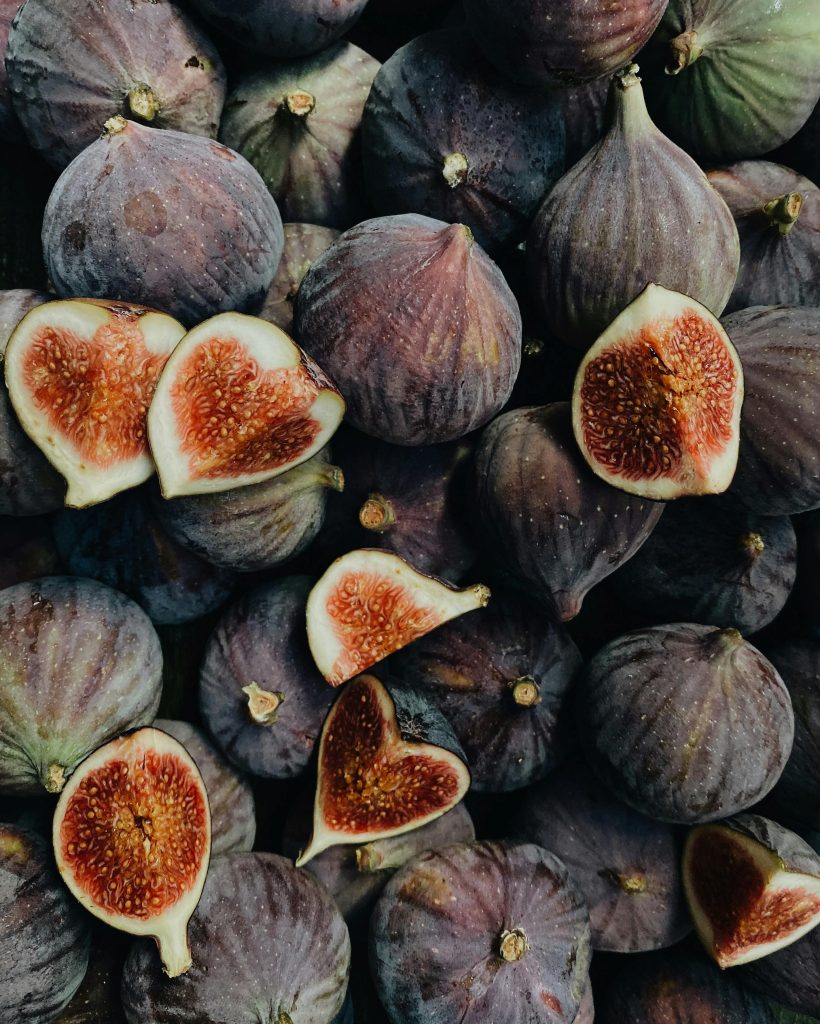Figs have been blipping on my radar. It started last year as I searched for something sweet to use for baking that wasn’t sugar or a sugar substitute. Being a migraineur brings with it many food restriction challenges. I really like figs, but as it turns out, they’re too high in potassium and salicylates for me.
Back in April, our church’s Women’s Life had a virtual seminar with Kristi McLelland, M.A.C.E, on Luke 15. The event was entitled “Feast” and as Ms. McLelland walked us through the chapter, along the way she explained the steps of a New Testament Middle Eastern feast. At the end, those who could partake of a fig all did so together.
Just a few weeks ago, our Life Group studied Eve through the teaching of Liz Curtis Higgs in her book “Bad Girls of the Bible.” Our discussion, of course, included the forbidden fruit. One of our ladies said, “Did you know that figs are actually an inverted flower?” Her sharing sparked my desire to learn more about figs and what they stand for and symbolize in Scripture.
“For the LORD your God is bringing you into a good land, a land
of brooks of water, of fountains and springs, flowing out in the
valleys and hills, a land of wheat and barley, of vines and fig trees
and pomegranates, a land of olive trees and honey, a land in
which you will eat bread without scarcity, in which you will
lack nothing, a land whose stones are iron, and out of whose hills
you can dig copper. And you shall eat and be full, and you shall
bless the LORD your God for the good land he has given you.”
Deuteronomy 8:7-10, ESV
These verses tell us that figs are one of seven of the edible land offerings in Israel – good land with abundance flowing. In Scripture, the fig tree often stands for blessing, well-being, and security. It also symbolizes fruitfulness and maturity.
There are also times when the fig tree is used to be the opposite of those offerings – things like curses, suffering, attack, dryness, and immaturity (Matthew 21:18-20; Mark 11:12-14; 20-25). Here’s a great explanation for all that https://www.gotquestions.org/curse-fig-tree.html.
What really caught my attention about figs though is my friend’s statement that they are an inverted flower. Here’s a great share from “Some Amazing Facts,” https://www.facebook.com/share/1E1shXHYro/ – “figs bloom inward, inside what looks like a single fruit but is actually a collection of tiny flowers, all hidden within the fig’s bulb-shaped structure. Technically, figs are what botanists call an infructescence—a cluster of many small fruits. That’s why when you bite into a fig, you’re actually eating hundreds of tiny flowers and seeds …”
That reminds me of a verse we hear often:
“Therefore, if anyone is in Christ, he is a new creation.
The old has passed away; behold, the new has come.”
2 Corinthians 5:17, ESV
Looking up the word “infructescence” is interesting, especially as defined from the National Phenology Network, https://www.usanpn.org/, which gives this definition, “A group or cluster of fruits arranged on an axis/stem that is composed of a main stalk, and often having a complex arrangement of branches. An infructescence is a result of an inflorescence of flowers successfully maturing to fruit.”
Wow, the symbolism is ripe to that!
“I am the true vine, and my Father is the vinedresser. Every branch in me
that does not bear fruit he takes away, and every branch that does bear
fruit he prunes, that it may bear more fruit. Already you are clean because
of the word that I have spoken to you. Abide in me, and I in you.
As the branch cannot bear fruit by itself, unless it abides in the vine,
neither can you, unless you abide in me. I am the vine; you are
the branches. Whoever abides in me and I in him, he it is that bears
much fruit, for apart from me you can do nothing.”
John 15:1-5, ESV


Recent Comments